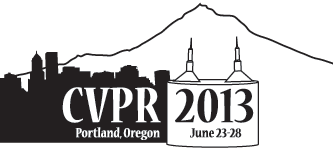-
Learning to Detect Partially Overlapping Instances
AbstractThe objective of this work is to detect all instances of a class (such as cells or people) in an image. The instances may be partially overlapping and clustered, and hence quite challenging for traditional detectors, which aim at localizing individual instances. Our approach is to propose a set of candidate regions, and then select regions based on optimizing a global classification score, subject to the constraint that the selected regions are non-overlapping. Our novel contribution is to extend standard object detection by introducing separate classes for tuples of objects into the detection process. For example, our detector can pick a region containing two or three object instances, while assigning such region an appropriate label. We show that this formulation can be learned within the structured output SVM framework, and that the inference in such model can be accomplished using dynamic programming on a tree structured region graph. Furthermore, the learning only requires weak annotations a dot on each instance. The improvement resulting from the addition of the capability to detect tuples of objects is demonstrated on quite disparate data sets: fluorescence microscopy images and UCSD pedestrians.
Related Material
[pdf][bibtex]@InProceedings{Arteta_2013_CVPR,
author = {Arteta, Carlos and Lempitsky, Victor and Noble, J. A. and Zisserman, Andrew},
title = {Learning to Detect Partially Overlapping Instances},
booktitle = {Proceedings of the IEEE Conference on Computer Vision and Pattern Recognition (CVPR)},
month = {June},
year = {2013}
}
These CVPR 2013 papers are the Open Access versions, provided by the Computer Vision Foundation.
Except for the watermark, they are identical to the accepted versions; the final published version of the proceedings is available on IEEE Xplore.
Except for the watermark, they are identical to the accepted versions; the final published version of the proceedings is available on IEEE Xplore.
This material is presented to ensure timely dissemination of scholarly and technical work.
Copyright and all rights therein are retained by authors or by other copyright holders.
All persons copying this information are expected to adhere to the terms and constraints invoked by each author's copyright.

